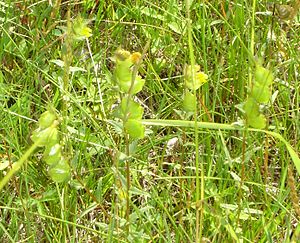Botanical Name :Hydrangea macrophylla
Family: Hydrangeaceae
Genus: Hydrangea
Species: H. macrophylla
Kingdom: Plantae
Order: Cornales
Synonyms : Hydrangea maritima – Haw-Booth.
Common Names :Azisai,Bigleaf Hydrangea, French Hydrangea, Lacecap Hydrangea, Mophead Hydrangea, Penny Mac and Hortensia., Florist’s Hydrangea, Bigleaf Hydrangea
Habitat : Native to E. Asia – Japan. Grows in sunny places near the coast of E. Japan. It grows in the sunny places near the coast of E. Japan. It is also widely cultivated in many parts of the world in many climates.
Description:
Hydrangea is a rounded shrub with huge, deciduous, opposite, serrated, medium to dark green leaves. It is usually seen at 3-6 ft (0.9-1.8 m) with an equal spread, but older specimens can exceed 8 ft (2.4 m)! Flowers are arranged in huge, ball shaped clusters on the most common varieties. There are many selected varieties (and many hybrids), the most striking of which is a variegated-leaf form that bears flat, or lace-capped inflorescences. The flowers are hermaphrodite (have both male and female organs) and are pollinated by Bees.Hydrangea macrophylla blossoms can be either pink, blue, or purple shades, depending on a pH-dependent mobilization and uptake of soil aluminium into the plants. Flowers on most hydrangeas are pH-sensitive, with dark purple or blue flowers in acidic soil, white or dull green in neutral earth, and pink in alkaline soil.
Hydrangeas make beautiful foliage in warm months. Flowering is best in areas with mild winters, since the plant blooms on previous year’s growth. French hydrangea may be evergreen in very mild winter areas. In its northernmost range, hydrangea is a foliage shrub, since flower buds are killed in hard winters.
It is frost tender. It is in flower from July to September.
The plant prefers light (sandy), medium (loamy) and heavy (clay) soils and requires well-drained soil. The plant prefers acid, neutral and basic (alkaline) soils and can grow in very acid soil. It can grow in semi-shade (light woodland) or no shade. It requires moist soil. The plant can tolerate maritime exposure.
Hydrangea macrophylla blossoms can be either pink, blue, or purple shades, depending on a pH-dependent mobilization and uptake of soil aluminium into the plants.
Cultivation:
Tolerates most soil, thriving in a well-drained loamy soil, but resenting dryness at the roots. Succeeds in full sun or semi-shade, but if it is grown in a low rainfall area then it requires shade at the hottest part of the day. Prefers a shady position. Does well on very acid soils with a pH around 4.5. Plants also tolerate alkaline soils, though they become chlorotic on shallow soils over chalk. The colour of the flowers reflects the pH of the soil the plant is growing in, the flowers are pink in a neutral to alkaline soil and blue in an acid soil. A very wind resistant plant when grown in mild areas. Dormant plants are hardy to about -10°c, though the young growth in spring is frost-tender. A very ornamental plant and polymorphic species, there are many named varieties. This species was named for a sterile (or ‘mop head’) cultivar so that the true species should really be referred to as H. macrophylla normalis. Plants are cultivated for their leaves in China and Japan. Plants are very tolerant of pruning and can be cut back into old wood if required[188]. This species is notably susceptible to honey fungus.
Propagation:
Seed – surface sow in a greenhouse in spring. Cover the pot with paper until the seed germinates. When they are large enough to handle, prick the seedlings out into individual pots and grow them on in the greenhouse for at least their first winter. Plant them out into their permanent positions in late spring or early summer, after the last expected frosts. Cuttings of half-ripe wood, 8cm long, July/August in a frame. Overwinter in a greenhouse and plant out in late spring. Cuttings of mature wood in late autumn in a frame. Mound layering in spring. Takes 12 months. Leaf-bud cuttings of the current seasons growth in a frame
Edible Uses:
Edible Parts: Leaves.
Edible Uses: Sweetener.
The young leaves, when dried and rubbed between the hands, become very sweet and are used to make a sweet tea called ‘tea of heaven’, it is used in Buddhist ceremonies. The leaves contain phellodulcin (its chemical formula is C16 H14 O), a very sweet substance that can be used as a sugar substitute. One small leaf is sufficient to sweeten a cup of tea. The older leaves can be dried, powdered and used as a flavouring on foods. The young leaves and shoots are also eaten cooked. Young leaves contain the toxin hydrocyanic acid, this reduces as the leaves grow older, often to zero levels.
Medicinal Uses:
Antiperiodic; Antitussive; Diuretic.
An extract of the leaves, roots and flowers are said to be a more potent antimalarial than quinine, due to one of its alkaloids.
Other Uses
Hedge.
A useful hedging plant because of its vigorous growth. The Hortensias or mop-head cultivars are recommended
Disclaimer:The information presented herein is intended for educational purposes only. Individual results may vary, and before using any supplements, it is always advisable to consult with your own health care provider.
Resources:
http://en.wikipedia.org/wiki/Hydrangea_macrophylla
http://www.floridata.com/ref/h/hydran_m.cfm
http://www.herbnet.com/Herb%20Uses_AB.htm
http://www.pfaf.org/user/Plant.aspx?LatinName=Hydrangea+macrophylla
Related articles
- Flower Glossary: Hydrangea (proflowers.com)
- Asphodelus albus (findmeacure.com)
- Hydrangea petiolaris – Climbing Hydrangea (creativeurbanite.wordpress.com)
- The Garden (lessonsfromtheendofamarriage.com)
- Angelica sylvestris (findmeacure.com)
- Angelica keiskei (findmeacure.com)
- Hydrangea Care Tips (proflowers.com)
- Xanthorhiza simplicissima (findmeacure.com)
- Different Types Of Pink Flowers (proflowers.com)
- Alexanders (findmeacure.com)

